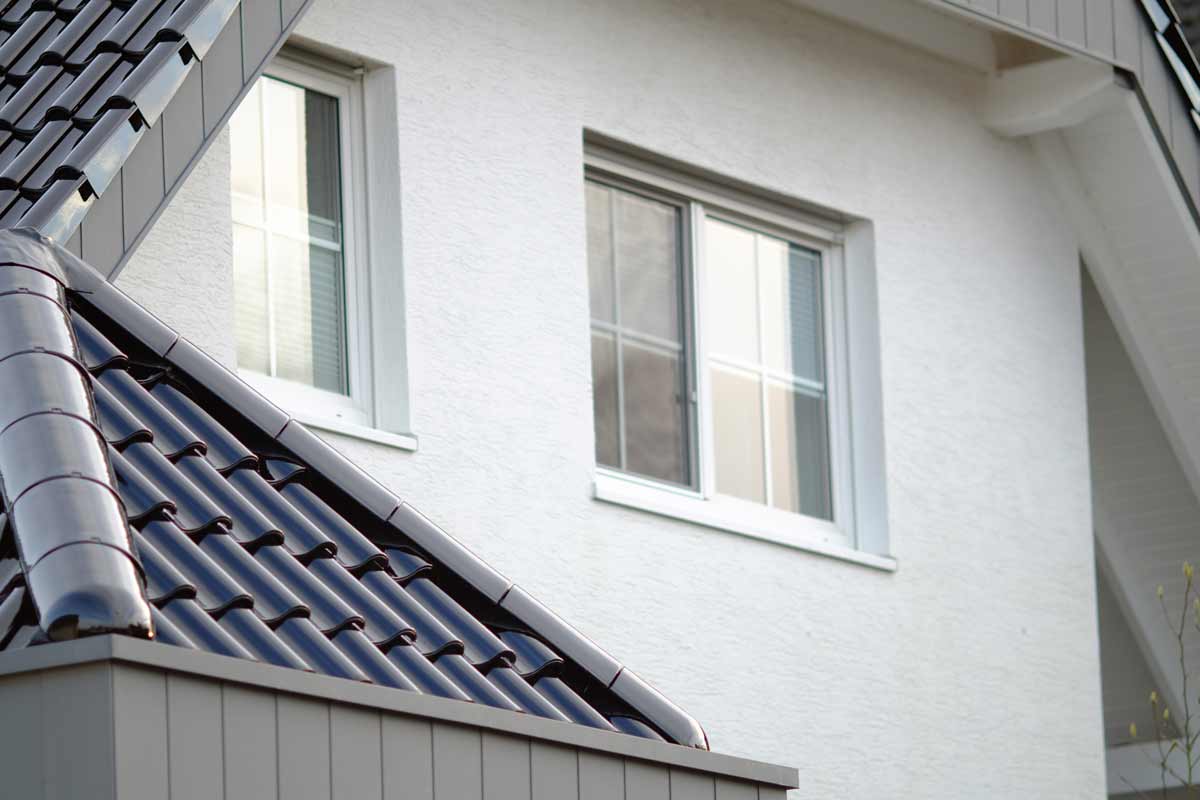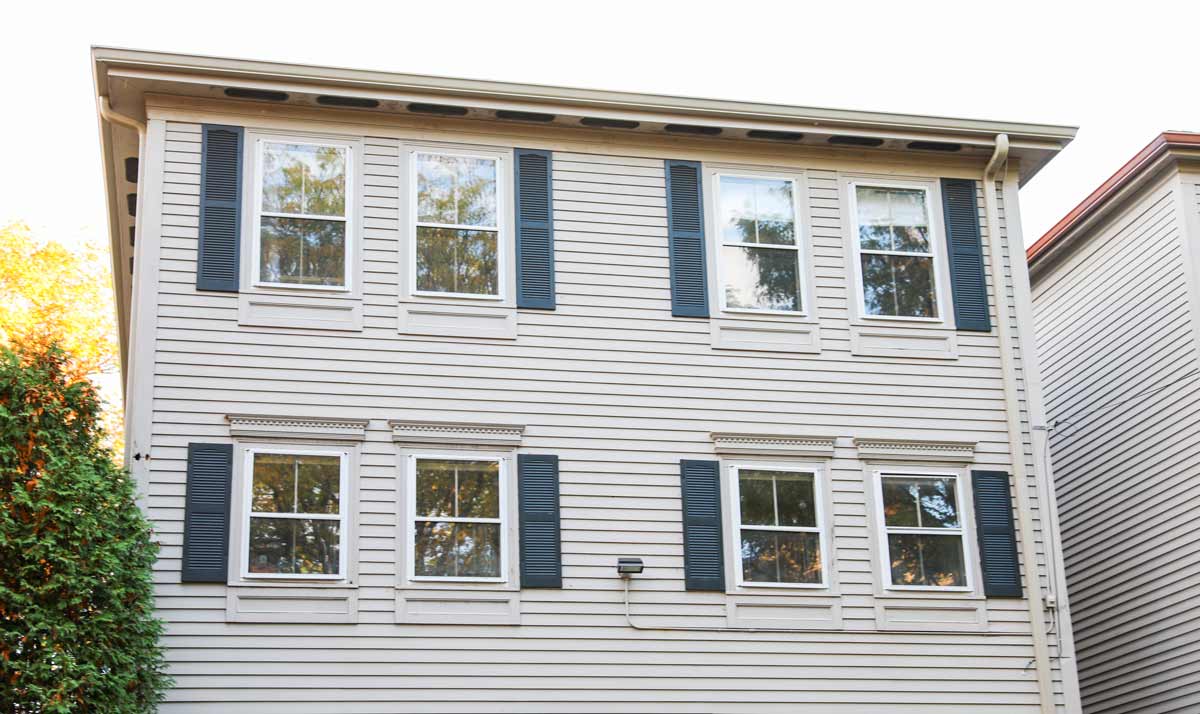- Free Estimates

✔ Vinyl siding doesn’t last forever—most products need replacement after 20–40 years.
✔ Knowing how often to replace vinyl siding helps homeowners plan timely upgrades and avoid unnecessary repair costs.
✔ Cosmetic damage often hides serious structural or moisture issues.
✔ Professional installation ensures siding performs well and maintains warranty coverage.
✔ Higher-quality vinyl siding offers better durability, insulation, and fade resistance.
✔ Routine maintenance like cleaning and caulking can help extend vinyl siding lifespan, keeping homes protected and visually appealing longer.
✔ Choosing the right siding is a long-term investment, not just a visual upgrade.
Vinyl siding remains one of the most popular exterior materials because it’s affordable, durable, and relatively low maintenance. Still, many homeowners fall into the trap of thinking it never needs to be replaced, even when the signs of wear are obvious.
How do you know when to replace vinyl siding? Well, the answer is simple—ignoring aging or damaged panels can quietly drive up energy bills, reduce property value, and lead to costly repairs. Knowing when to replace vinyl siding can help prevent small issues from turning into costly structural damage.
Here are five common myths about vinyl siding—and the real truths that can help save money in the long run.

Vinyl siding is often marketed as a “lifetime” product, which makes many people believe it never needs to be replaced. While it does hold up well under normal conditions, no exterior material is truly permanent. Time, weather, and wear eventually catch up, even with the best siding brands.
Most vinyl siding lasts about 20 to 40 years, depending on the climate and product quality. Regular inspections and prompt repairs can help extend vinyl siding lifespan, but full replacement becomes more cost-effective when damage is widespread. Smart homeowners see siding replacement as a long-term investment and understand when to replace vinyl siding to get the most value and protection.
Many believe that replacing vinyl siding is a costly upgrade with little return. That mindset often delays decisions until damage becomes unavoidable. In reality, smart replacement timing can lead to serious long-term savings.
While new siding may seem like a big upfront cost, it delivers ongoing savings by lowering energy bills and eliminating the need for constant repairs. It also increases resale value, making it a smart long-term investment. When you understand how often to replace vinyl siding, you’re better positioned to invest wisely before repair costs spiral out of control.
Many assume that issues like discoloration, small dents, or surface cracks are purely visual. The danger lies in ignoring what’s happening beneath the surface. What looks minor from the outside can signal deeper, costlier problems inside the walls.
Siding damage often runs deeper than it appears. What starts as surface wear can turn into costly repairs if ignored. According to roofing experts, ignoring structural issues will compound over time. Spotting hidden damage early is key to knowing when to replace vinyl siding before repairs become overwhelming.
Some homeowners believe replacing vinyl siding can be tackled over a weekend with the right tools. While DIY might save on labor costs upfront, it often leads to mistakes that cost more to fix. Proper siding installation is more complex than many expect.
Vinyl siding may look simple, but installation demands technical skill and precision. Poor DIY work often leads to reinstallation costs down the road. A roofing company knows that homes need trained hands to ensure long-term siding durability. Making mistakes with installation not only leads to performance issues—it also shortens the timeline for when to replace vinyl siding again in the future.
It’s easy to assume that all vinyl siding is cut from the same mold—after all, it often looks alike at first glance. However, not all siding is built with the same standards or materials. Differences in thickness, composition, and protection features make a huge impact over time.
Vinyl siding options are not all created equal. Homeowners benefit from investing in materials that offer long-term performance, energy savings, and warranty protection. Selecting siding requires comparing more than just surface features—quality and service make all the difference.

Experts project that the roofing market will grow at an annual rate of 5.5% from 2023 to 2033, reflecting increased demand and greater product variety. Not all vinyl siding is created equal, and choosing wisely ensures you won’t have to guess when to replace vinyl siding again anytime soon.
Thicker vinyl siding resists dents, high winds, and everyday impact better than economy-grade products. Premium siding typically ranges from .044″ to .055″ thick, while cheaper versions fall under .040″. Over time, thinner materials crack and warp more easily, increasing the need for repairs.
High-quality siding comes with UV-blocking technology baked into the outer layer, helping it maintain color vibrancy even after years of sun exposure. Without it, colors fade unevenly, and the home starts to look aged far too soon. Replacing faded panels costs time and money better spent elsewhere.
Insulated vinyl siding has a foam backing that enhances energy efficiency by reducing thermal bridging. Homes in colder climates benefit from lower heating bills, while those in warmer areas see improved cooling performance. Though more expensive upfront, it often pays for itself in utility savings over time.
Vinyl siding comes in clapboard, Dutch lap, board and batten, and shake styles. The right design not only enhances curb appeal but also protects resale value by aligning with the home’s architectural character. Style consistency is important.
Reliable siding products come with transferable warranties that cover fading, cracking, and manufacturing defects for up to 30–50 years. Some warranties even include labor coverage when installed by certified professionals. Homeowners should treat warranties for peace of mind.
Some vinyl siding options include recycled content and are certified for environmental performance. Others are designed to resist mold, algae, or grime build-up, reducing how often they need cleaning. These features offer convenience, savings, and lower upkeep.
Even the best vinyl siding can fall short if it’s installed incorrectly. From structural alignment to weather protection, the quality of installation affects how well siding performs over time. Working with experienced contractors is just as important as choosing high-end materials.
Vinyl expands and contracts with temperature changes, so panels must be installed with room to move. Professionals use precise nailing and spacing techniques to prevent buckling or warping as the seasons change.
Improper flashing leaves gaps that allow water to seep behind the siding, leading to rot and mold. Experienced installers apply flashing and moisture barriers in the right sequence to block leaks before they start. This level of detail offers protection against breakdowns.
Gaps between siding panels can cause cold drafts and insulation failure, especially around windows and corners. Certified installers use caulking, foam backing, and careful fitting to eliminate thermal gaps. This attention to detail improves energy efficiency.
Installing siding requires specialized cutting tools, scaffolding, and safety gear that most homeowners don’t own. A professional crew works faster, safer, and with fewer errors, reducing the risk of injury or damage. That’s why working with a trained crew is essential to avoid mistakes that cost more later.
Most siding warranties require certified installation to remain valid. Hiring a professional not only protects the home but also ensures warranty coverage if defects or issues appear years later.
Crooked lines, uneven seams, and exposed nails can make even quality siding look sloppy. Skilled installers deliver a clean, consistent finish that boosts the home’s curb appeal and resale value. Their work reflects the professionalism that comes from hiring experts.
On average, vinyl siding lasts about 30 to 40 years, but regular care is key to reaching the upper end of that range. Installing new siding is a major investment, and knowing how often to replace vinyl siding can help you plan for maximum value. The right upkeep doesn’t have to be complicated—it simply extends longevity to keep it running smoothly over time. Consistent upkeep like cleaning, caulking, and pest control plays a key role in extending your vinyl siding lifespan.
Dirt, pollen, and mildew can build up on vinyl siding over time, dulling its finish and encouraging mold. A gentle wash with a garden hose, soft brush, and mild soap usually does the trick. Avoid power washers, which can force water behind panels or void warranties.
Branches brushing against siding can cause scratches or cracks, especially during windstorms. Keeping plants trimmed back prevents physical damage and stops moisture from settling too close to the home. This small task protects the exterior of homes.
Wind, hail, and heavy rain can shift or damage siding panels without always being obvious. A quick post-storm walkaround helps spot any gaps, dents, or movement early. Fixing these issues right away is much easier than waiting until moisture gets inside.
Clogged gutters spill water onto siding, leading to streaks, warping, and even foundation damage. Seasonal cleaning helps prevent overflow, keeping both siding and landscaping intact. Maintenance in one area often protects others, safeguarding the entire home.
Bees, birds, and squirrels sometimes find gaps in siding appealing for nesting. Pest activity can loosen panels, damage insulation, and create entry points for moisture. A quick visual check every few months keeps problems from going unnoticed.
Siding joints around windows, doors, and trim are sealed with caulk that wears down over time. Reapplying caulk every few years ensures water and drafts stay out. It keeps homes protected and energy efficient.
Yes, vinyl siding can be painted, but only with the right type of paint and surface prep. Using paint not formulated for vinyl may lead to warping or peeling. Painting may temporarily address vinyl siding fading, but it won’t solve insulation or structural problems beneath. A full siding replacement is often the better long-term solution, offering improved insulation, durability, and curb appeal.
Vinyl siding is not fireproof, but it is designed to meet building code fire safety standards. It can melt or warp under extreme heat, so it’s not ideal for areas with high wildfire risk. In such regions, fiber cement or metal siding may be better alternatives due to their higher fire resistance. Additionally, melted siding can expose the structure beneath, potentially accelerating damage in a fire scenario.
Some insurance providers offer better rates for homes with newer, durable siding due to reduced risk of water or pest damage. Vinyl siding can qualify for discounts if it’s rated for impact resistance and installed professionally.
Vinyl siding can be installed on historic homes, but local preservation rules may restrict certain styles or materials. There are options that mimic wood grain and traditional profiles to help maintain the original aesthetic. Choosing the right style is key.
You’ll notice signs like cracking, warping, fading, or loose panels that no longer fit tightly. Rising energy bills or moisture damage inside your walls are also red flags. If your exterior shows these issues, it’s time to evaluate how do you know when to replace vinyl siding to avoid bigger problems down the road.
When it comes to protecting what matters most, Roofing Experts of Hyde Park delivers lasting craftsmanship and dependable service right here in Hyde Park, NY. Whether it’s a quick repair or a full roof replacement, our team brings years of local experience and attention to detail to every job. Homeowners count on our honest advice, quality materials, and stress-free process to keep their homes safe year-round.
Reach out today and get peace of mind from a crew that knows roofing—and the neighborhood—inside and out!